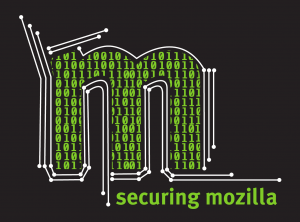User:Gdestuynder/principles: Difference between revisions
Jump to navigation
Jump to search
Gdestuynder (talk | contribs) No edit summary |
Gdestuynder (talk | contribs) |
||
| Line 79: | Line 79: | ||
* Send logs to a centralized service (MozDef, Papertrail, S3, etc.) | * Send logs to a centralized service (MozDef, Papertrail, S3, etc.) | ||
* Audit processes at the system level (Auditd, Windows Audit) | * Audit processes at the system level (Auditd, Windows Audit) | ||
* Run | * Run [https://mig.ninja MIG] | ||
== Are you at risk? == | == Are you at risk? == | ||
Revision as of 00:14, 10 March 2017
|
STATUS: READY The goal of this document is to help operational teams agree on a basic set of principles to set expectations and give overall guidance to secure a service. The Enterprise Information Security team maintains this document as a reference guide for operational teams. Updates to this page should be submitted to the source repository on github. Changes are detailed in the commit history. |
Least Privilege
Do not present unnecessary services
Do
- List all services presented to the network (Internet and Intranets). Justify the presence of each port or service.
Do not
- OpenSSH Server (sshd) is running but is never used.
- A DNS resolution caching server (dnsmasqd) is running locally but only upstream DNS nameservers are used by clients.
- A file sharing server (samba/smbd) is running but no files are stored or exchanged on the server.
- A web-application propose an administration service that you can login to through the website, but it is not being used.
- A database server (SQL) allows connections from any machine in the same VLAN, even thus only a single machine needs to connect to it.
- The administration login panel of the network switch for the office network is accessible by regular office users.
Do not grant or retain permissions if they're not actively used
Do
- Use role-based access control (allows for easy granular escalation of privileges, only when necessary)
- Expire access automatically when unused.
- Use different accounts for different role types (admin, developer, user, etc.) when no good role-based access control is available.
Do not
- Allow root access (e.g. via 'sudo') to all systems for all operation engineers, regardless of the actual services they maintain.
- Give access "just in case".
- Never revisit access rules for users.
Defense in Depth
Do not allow lateral movement
Do
- Use host-based firewall rules that self-protect the system regardless of the rules from the network equipment, or the location of the system.
- Avoid usage of firewall rules that allow any inbound connection to connect to a listening port (such as OpenSSH, RDP).
- Clearly enforce which team has access to which set of systems.
- Clearly assign administrative roles of different authentication & authorization services to different people.
Do not
- Have system administrators with access to every system/every service.
- Share administrative user access to authentication & authorization systems.
- Allow OpenSSH, RDP connections from any host on any network.
- Allow tools remotely executing code on every system from a centralized location (single Puppet Master, Ansible Tower, Nagios, etc. instance).
Patch Systems
Do
- Establish regular patching time windows.
- Ensure systems can be turned off and back on without affecting availability.
- Turn on automatic patching where possible.
Meet Web Standards
Do
- Achieve B+ or higher on Mozilla's Observatory
- Follow the Security/Guidelines/Web_Security recommendations.
Encrypt sensitive data
Do
- Encrypt data at rest when not actively used by the system.
- Use full-disk encryption where available.
- Encrypt credentials storage databases (Ansible Vault, CredStash, etc.)
- Encrypt traffic in transit (TLS)
Know Thy System
Audit and Logging
Do
- Send logs to a centralized service (MozDef, Papertrail, S3, etc.)
- Audit processes at the system level (Auditd, Windows Audit)
- Run MIG
Are you at risk?
Do
- Run rapid risk assessments Security/Risk management/Rapid Risk Assessment for your services.
- Estimate what would happen if your service was compromised.
Do not
- Think it will never happen to you.
Inventory
Do
- Keep an automatic inventory of machines, services, responsible parties.
KISS - Keep It Simple and thus Secure
Do
- Keep things simple. Privilege simplicity over complex-satisfies-obscure-requirements architecture.
- Ensure others understand your design.
- Use standardized tooling that others already know how to use.
- Draw high-level data flow diagrams.
Authentication and authorization
No authentication that isn't 2FA
Do
- Enable service-specific 2FA (GitHub, Google, etc.)
- Add 2FA to your applications, or use an SSO (Single Sign On) solution with 2FA.
No direct handling of user credentials
Do
- Use an SSO (Single Sign On) solution that authenticate users on your behalf.
Do not
- Process, transmit or store user credentials (passwords, OTPs, keys, etc.) Let the authentication server directly handle it.
- Use direct LDAP authentication for users.
Centralize authentication and authorization
Do
- Use an SSO (Single Sign On) solution that authenticate users on your behalf.
- Use the same SSO to pass on authorization rules.
No reuse or sharing of credentials
Do
- Use password managers.
- Use purpose-build credential sharing mechanisms when sharing is required (1password for teams, LastPass, etc.)
Do not
- Send your password to others.
- Send shared passwords over email or other communication mediums.
- Use the same password for several services.
Network identity is not authentication
Do
- Use credentials-based authentication and user session management where the session information is passed by the user (https://research.google.com/pubs/pub44860.html)
Do not
- Trust traffic from a certain network address.
- Use IP ACLs to control access to systems.
- Trust the office network for access to devices.
